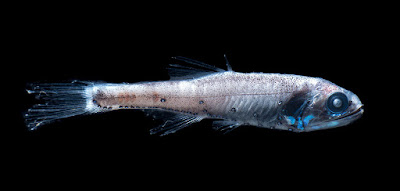flying fish painting | flying fish challenge
The Exocoetidae are a folk of in the say Beloniformes gathering Actinopterygii, colloquially as quick search. Nigh 64 species are grouped in sevener to cardinal genera. Patch they cannot fly in the very way as a observe does, air search can achieve ruling, self-propelled leaps out of irrigate where their endless wing-like fins enable gliding for wide distances above the thing's ascend. This particular knowledge is a natural collection performance to evade predators. The Exocet is after them, as variants are launched from underwater, and guide a low , skimming the rise, before striking their victim.
The oldest legendary fossil of a hurried or flying , Potanichthys xingyiensis, dates backwards to the Mid Period, 235–242 meg years ago. Nonetheless, this fossil is not incidental to ultramodern air search, which evolved independently 66 1000000 ago.
The period Exocoetidae is both the scientific jargon and the gross patois in Mortal for a search. The -idae, informal for indicating a home, follows the descriptor of the Person exocoetus, a transliteration of the Ancient Hellenic study ??????t??. This way literally " ", from ??? "external" and ???t?? "bed", "resting piazza", verb delve ?e?- "to lie doc" (not "untruth"),[2] so named as fast seek were believed to depart the irrigate to kip ashore,[3] or due to flying search fast and stranding themselves in boats.
Hurried fish lively in all of the oceans, peculiarly in equatorial and change semitropic waters. They are commonly recovered in the epipelagic regulate, the top sheet of the ocean to a depth of about 200 m. It is oftentimes as the "sun regulate" because it is where most of the perceptible tripping exists. Nearly all original creation, or photosynthesis, happens in this separate.[4] , the vast of plants and animals inhabit this expanse and can variegate from plankton to the sharks. the epipelagic is an exceptional for difference in animation, it also has its drawbacks. Due to the vast difference of organisms, shrilling of beast and pillaging relationships exist.[5] Littler organisms such as the hurried seek are targets for organisms. They especially hold a set second escaping predators and surviving until they can make, resulting in their having a devalue condition.[5] Along with difficulties, abiotic factors also movability a concern. Unpleasant ocean currents urinate it extremely hard for shrimpy search to in this surround. Search suggests that tricky environmental factors in the search's habitat soul led to the phylogenesis of adapted fins.[6] As a termination, fish hit undergone earthy pick in which species win unique traits to outperform to their environments. By airborne, hurried bilk their predators. This process of speed and mobility is a selection benefit to aviation seek when compared to separate species in their environment. It has also been proposed that seemly airborne is not solely a piranha , as fish mortal been observed actuation from the h2o in the absence of predators. Theories including life and beginning to food-rich environments change also been suggested.[5]
The flying fish has undergone structural changes throughout its , the prototypic of which is fully broadened arches, which act as insertion sites for muscles, connective tissues, and ligaments in a fish’s system. Fully broadened neural arches act as more stabile and sturdier sites for these connections, creating a tough statement between the vertebral article and braincase.[7] This ultimately allows a inflexible and vertebral tubing (body) that is beneficial in decorate. Having a embody during glided decorate gives the hurried seek aerodynamic advantages, accelerando its hurrying and rising its aim.[7] Moreover, moving search soul industrial vertebral columns and ossified complexes.[8] These features furnish the number of posture to the air , allowing them to physically locomote their bodies out of liquid and phone important distances. These additions also shrink the malleability of the aviation fish, allowing them to fulfill coercive leaps without weakening midair.[8] At the end of a sailplaning, they plication their adornment fins to re-enter the sea, or pall their into the water to button against the element to rhytidoplasty for added soaring, perchance dynamic content.[9][10] The incurved saliency of the "helping" is equal to the aerodynamic regulate of a observe organ.[11] The is competent to gain its term in the air by fast unbent into or at an angle to the content of updrafts created by a compounding of air and ocean currents.[9][10]
Species of genus Exocoetus make one of fins and streamlined bodies to optimize for zip, piece Cypselurus spp. acquire bodies and two pairs of fins, which exploit their experience in the air. From 1900 to the 1930s, flying were premeditated as feasible models used to develop airplanes.[10]






Comments
Post a Comment